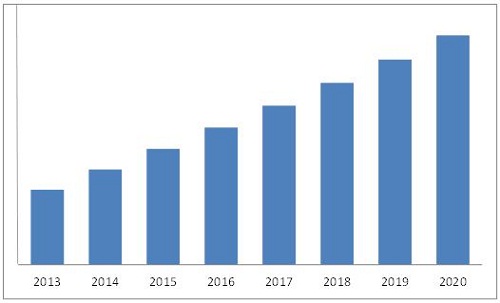Smart lighting includes an environment which is completely controlled by lighting control systems. The use of these lighting control systems enable to deliver the right amount of light at the right place and also at the right time. This aids to increase the potential of smart lighting industry. The use of internet-enabled lighting devices and integration of wireless technologies with such devices are biggest factors for the growth of smart lighting industry. The lighting control systems utilize factors such as occupancy, available daylight and time of day to turn lights on or off accordingly. The building owners as well as administrators are therefore experiencing a great level of flexibility along with a noteworthy energy and cost savings. The evolution of smart lighting over a period of years includes technologies and solutions such as automated lighting controls, occupancy and daylight detection, use of Light Emitting Diode (LED) / Organic Light Emitting Diode (OLED), implementation of wireless lighting.
In commercial buildings, lighting adds up to 40% of the total cost of energy. The number increases when it comes to the buildings with specialized settings such as healthcare facilities (43%) and hotels (55%). As energy cost is increasing, creating an energy-efficient workplace is now a priority to each and every business. Reducing this energy consumption is the major objective for building owners, governments, utilities, and many other stakeholders. The rising growth of LED lighting in commercial modernization, rapid growth of street lighting systems, expansion of smart lighting for smart cities, energy efficiency are driving the exponential development of smart lighting around the world. The public and government buildings application is another star sector that has a high market share as well as high growth rate in the smart lighting market. Smart lighting provides appropriate lighting conditions at the offices that are instrumental in increasing workforce productivity and improving working conditions. With number of big windows and enormous amount of natural, ambient light, the commercial can save a lot of energy through the use of dimming control. A greater level of energy reduction is achieved from switching-off the lights when not required, optimizing light levels to suit workers’ needs, and reducing the overall demand for lighting energy. Additionally the self-control of smart lighting is far better than conventional lighting, which is the best way to ensure that lighting energy is automatically reduced as much as possible.
Lighting Control solutions, based on different technologies, reduce lighting energy consumption in commercial & industrial buildings by up to 70%. These solutions were restricted in the past by cost, complexity and applicability, but new wireless technologies provide ways to expand the capabilities of lighting control and offer them to a wider set of customers. Residential building applications will also potentially grow to a large extent with the incorporation of wireless technology, as compared to the other applications.
For more detailed information click here

